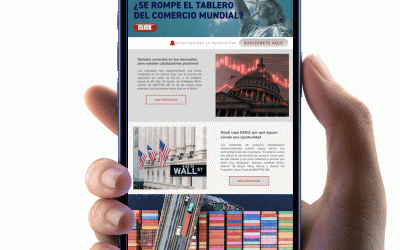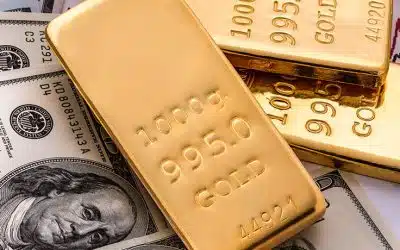Evergrande: Some Calm and Practical Lessons

Redacción Mapfre
Where we’re coming from
Evergrande is a Chinese group focused on real estate and construction, though it has a wide variety of other lines of business. With nearly four and a half million workers (both direct and subcontractors), it is one of the largest companies in China and in the world in that sector. It grew explosively up until early this year, primarily in the area of construction, based increasingly on borrowing.
As we have commented on other occasions, in the first half of 2021, the Chinese government put the brakes on economic growth. It applied three types of restrictive policies: regulatory, fiscal, and monetary (credit). The latter is what hurt Evergrande most.
As the Chinese government itself has recognized, the most pressing need was for more robust growth, avoiding stability risks. In other words, it preferred to slow growth in exchange for reduced financial and inflationary risks. It knows that the latter are much more of a threat to the regime than slower growth.
And that is exactly what happened. In fact, the growth forecast for China has fallen sharply. The practical consequence is that some companies that were growing on the back of debt not only interrupted their growth but are facing repayment problems, as is the case with Evergrande.
This affects individual citizens who, in addition to losing their real estate investments (Evergrande cannot complete construction of homes, or they are losing value), are also seeing other investments in danger. Some are even indebted to Evergrande and other companies that had been floated among the country’s retail investors.
The situation has been worsened by China's demographic shifts, which, together with other factors, have rapidly eroded the value of the massive housing construction projects of recent years. It is a textbook real estate bubble, something that has been widely known for some time, and precisely one of the issues that the Chinese government wants to resolve.
Where we are now
In this context, Evergrande announced last week that it had requested aid due to a cash flow crisis. For now, it is not a situation of bankruptcy or default, but it is a critical time for the company.
Initially, the financial market assumed it would default on its debts, which could lead to a certain level of panic. That explains the market dips of recent days. That imminent concern was quickly put to rest, transmitting a message of certain calm to the market. But the problem persists. The reality is that Evergrande cannot make its payments for the coming months.
Evergrande’s debt on the market is some $300 billion. Of that, some $20 billion was issued on the international markets. The bonds in dollars have a price of 30-35 cents on the dollar. That means investors are ruling out default or, more probably, a “bailout” process that involves losses of around 70% of the investment for bondholders.
The global risk is largely reduced by the fact that international investors are not heavily involved and that its ties with banks are limited. It does not at all seem to be a “Lehman moment” as some sensationalist media outlets have suggested. In other words, the threat of a direct impact on portfolios is extremely low (on portfolios outside of China, obviously; internally, it is a serious problem).
But there is a risk due to transmission processes that could arise as a result. In simple terms, they could come in two forms:
1. Direct economic impact. In this situation, the price of real estate assets could plummet quickly and/or the cash flows that circulate massively to China from foreign banks1 could be interrupted. This could be reflected, for example, in problems in the exchange rate. The likelihood is small due to the Chinese authorities' ability to replenish the cash flows.
2. Indirect impact via portfolios. While the direct impact is very low, as we have pointed out, there could be panic and/or an increase in the risk standards of funds that could send investors into a spiral of selling assets in the region. This is especially true following the abundant flows recently towards Asia. The primary mechanism through which this impact could arise would be the indexed funds that replicate indexes, or funds that use emerging indexes as a benchmark. Chinese development and construction represent nearly 30% of the Barclays Asia USD High Yield index, while China in general represents 30% of the MSCI Emerging Markets. This would be the most dangerous process, although again, for now, the enormous amount of money on the market seems to be acting as a cushion. In any case, it will depend on what happens with the company and the sector from here on out.
What might happen
Given the circumstances, it seems clear that Evergrande cannot make its payments, especially those due in the early months of 2022. The market is ruling out a disorderly default. The Chinese government's accounts would hardly be affected by a bailout, and it has absolutely no interest in a chaotic process that could thwart its ambition to become a reference on the global financial markets in the future.
However, the authorities might not like a full bailout, without any of the investors suffering losses, as it causes moral hazard, which is precisely what they are trying to limit; that more solid growth they are proposing.
Evergrande could, in turn, try to cash in bonds on its own, but success is highly unlikely given the limited value of its assets. Were it to happen, it would mean losses for the bondholders, though that could be “healthy” in that it would be a natural, private restructuring. In any case, it really is quite unlikely.
The interest of the Chinese authorities appears to point towards an intermediate process. The government wants to make it clear that the party’s over, so it needs to allow investors to suffer losses. At the same time, however, it needs to control the situation to avoid a downward spiral in the markets.
That would all point to a partial bailout. It could take shape in a number of ways: saving some investors completely and not others, or all of them, but not 100%. What does seem clear is that the government is interested in saving retail investors, or at least the retail investors who have purchased homes they will never receive. It could punish debt and general stock investors, or also spare the retailer investors among them. A final option could be to save only domestic investors to the detriment of foreigners.
Among the above, the latter option seems to have been discarded because of the negative effects it would have on the global financial markets. In fact, it is the one that would lead to the indirect impact on portfolios mentioned in the previous section. So, the most probable outcome is a partial bailout, to teach a lesson, but with limited damage. That is what the market is counting on at the moment, but the fear remains.
Conclusions and lessons learned
Evergrande on its own will not trigger a massive market crash. Its value is small in global terms, and there is enough money to cover it. And its ties outside of China are very limited. In fact, the problematic situation has been discussed on the market for some time, especially this year.
The problem is that it is happening at a very chaotic macro moment. The global growth forecast is being reduced greatly, there is talk of changes in the policies of the central banks... the year has been very good, so all of this calls for recommending prudence, which we have been announcing since June. In that sense, Evergrande could act as a spark, triggering a psychological effect. But again, the massive cash flow and positioning of the central banks will prevent a crash.
So, for now, the situation is limited to a correction that, on the other hand, the market needed, and the short-term risk. In my personal opinion, the greatest risk due to the convergence of circumstances and data will come in March of 2022.
However, we are seeing certain downturns that remind us that there is volatility. And that’s healthy. What isn’t so healthy is that the volatility was suppressed completely by monetary policies. And that, in turn, is a valuable lesson for investors, especially retail investors, so that they:
- Remember that risk profiles exist for a reason; and that if they choose to take on greater risks, now is the time to show that it is the case.
- Consider how more conservative portfolios still have a protective effect, which transmits a certain amount of calm.
- Times like these are an investment opportunity, so it is important to remember the importance of periodic, long-term savings, as well as trusting good advisors and managers.
Alberto Matellán, chief economist at MAPFRE Inversión



